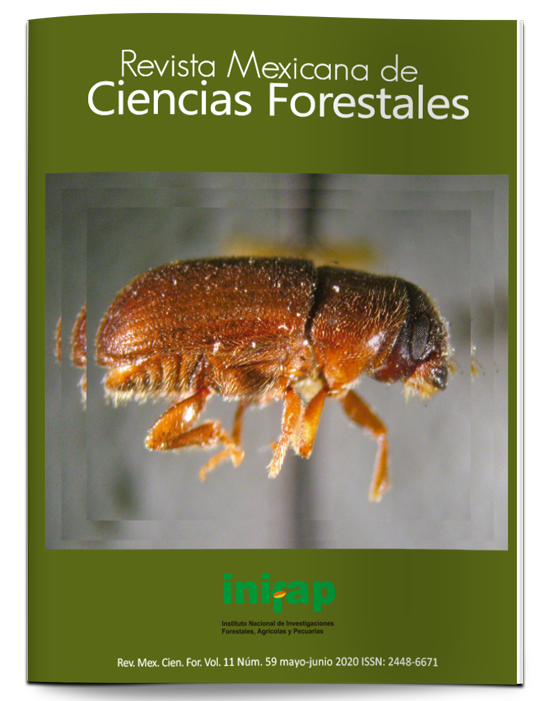Moisture retention curves and pedotransfer models in Andosol under different land uses
DOI:
https://doi.org/10.29298/rmcf.v11i59.666Keywords:
Available water, Andosol, field capacity, pedotransfer functions, permanent wilting point, land useAbstract
The purpose of this research was to determine the behavior of the moisture retention capacity of an Andosol considering different land uses (forestry and agricultural (conventional avocado, organic avocado and macadamia)), and to determine the field capacity (CC), the permanent wilting point (PMP) and the available water (AD [CC-PMP]), as well as to validate six pedotransfer functions for CC and PMP. The moisture retention curve (CRH) was applied with the pressure plate and pressure membrane method at different voltages: 33 (CC); 50, 150, 500, 1 000 and 1 500 ([PMP] kPa), using plate extractors on samples collected at two different depths (0-20 and 20-40 cm). The results show that there are significant differences between land uses and between tensions. The CC registered values ranging from 55.95 to 69.03 %, and the PMP, values between 33.54 and 45.66 % at a depth of 0-20 cm, and of 40.99 to 62.02 % and 25.27 to 36.89 % at a depth of 20-40 cm, respectively, for an Andosol. According to the results, the FPT that exhibited the greatest predictive capacity for the determination of water content was that of Rawls and Brakensiek. The change of land use from forest land to agricultural crops modifies the moisture retention capacity of Andosols.
Downloads
Published
How to Cite
Issue
Section
License
The authors who publish in Revista Mexicana de Ciencias Forestales accept the following conditions:
In accordance with copyright laws, Revista Mexicana de Ciencias Forestales recognizes and respects the authors’ moral right and ownership of property rights which will be transferred to the journal for dissemination in open access.
All the texts published by Revista Mexicana de Ciencias Forestales –with no exception– are distributed under a Creative Commons License Attribution-NonCommercial 4.0 International (CC BY-NC 4.0), which allows third parties to use the publication as long as the work’s authorship and its first publication in this journal are mentioned
The author(s) can enter into independent and additional contractual agreements for the nonexclusive distribution of the version of the article published in Revista Mexicana de Ciencias Forestales (for example, include it into an institutional repository or publish it in a book) as long as it is clearly and explicitly indicated that the work was published for the first time in Revista Mexicana de Ciencias Forestales.
For all the above, the authors shall send the form of Letter-transfer of Property Rights for the first publication duly filled in and signed by the author(s). This form must be sent as a PDF file to: ciencia.forestal2@inifap.gob.mx
This work is licensed under a Creative Commons Attribution-Noncommercial 4.0 International license.






